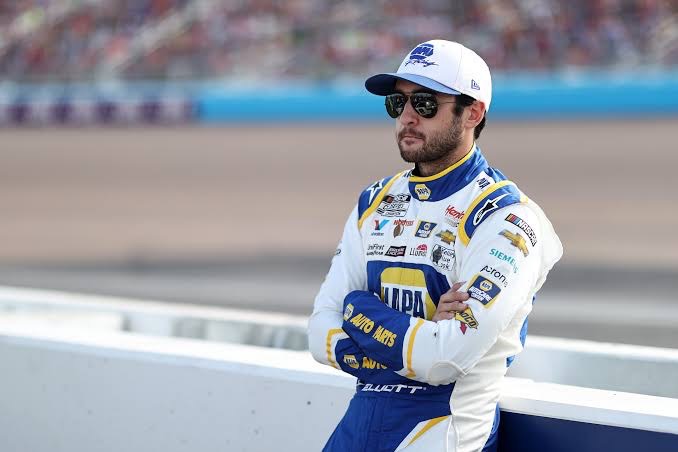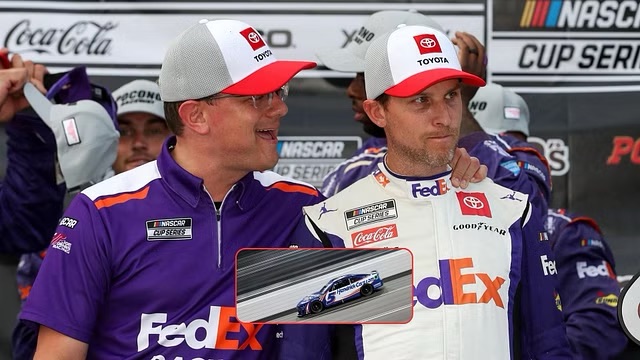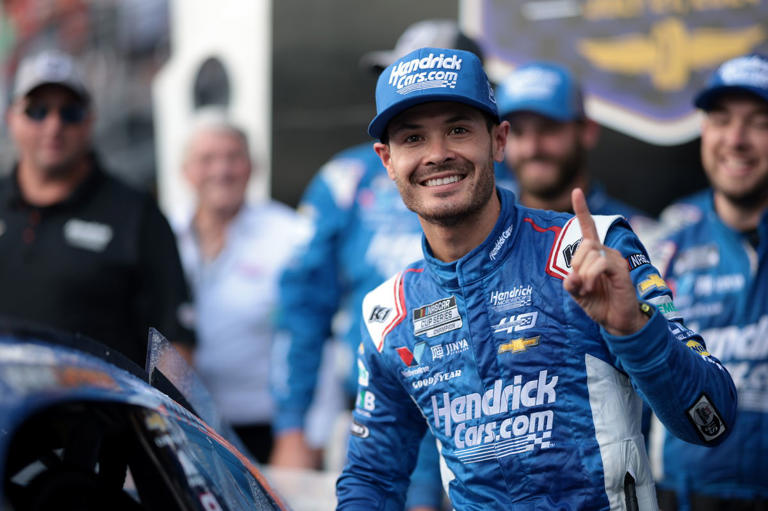In the world of NASCAR, where split-second decisions make the difference between victory and disappointment, restarts are critical. Yet, even the most talented drivers, like Chase Elliott, can face tough days where things just don’t go as planned. A recent comment from a frustrated fan sheds light on what has been a recurring issue for Elliott during races—his struggles with choosing restart lanes, particularly the inside lane.
The comment, “He can be so stupid sometimes I hate it. Not once did he restart on the inside and got screwed basically every time and just let it happen,” reflects the sentiment of some of Elliott’s supporters who have watched him battle through difficult restarts time and time again. But is this frustration justified? Could Elliott’s choices be part of a larger strategy, or are they simply costly mistakes?
The Importance of Restarts in NASCAR
Restarts in NASCAR are pivotal moments in any race. After a caution, drivers must decide whether to start from the inside or outside lane—a choice that can make or break their race. The outside lane often provides a better line through turns, while the inside can offer a more aggressive route for passing, depending on the track. It’s a split-second decision, but one that drivers train for intensely.
For Elliott, restarts have sometimes been a thorn in his side. The comment points out that he has repeatedly chosen the wrong lane, failing to capitalize on the opportunities presented to him. This raises an important question: Why does a seasoned driver like Chase Elliott, with a solid track record and undeniable skill, struggle with this aspect of racing?
Understanding Chase Elliott’s Decision-Making
At first glance, it’s easy to dismiss Elliott’s struggles as errors in judgment. However, NASCAR is more than just instinct—it’s strategy. Every decision made on the track is a calculated risk. Drivers must factor in everything from track conditions, tire wear, and car handling to the strength of their competition. Sometimes, what seems like the “wrong” lane choice may be based on how Elliott’s car is performing in that particular race.
For instance, the inside lane may seem like a bad choice if a car isn’t handling well on the lower part of the track, or if Elliott knows his competitors are strong on the outside. While fans watching from the stands or at home might see it as a missed opportunity, Elliott’s choices are influenced by a myriad of factors that aren’t always visible.
The Pressure of High Expectations
Chase Elliott, a fan favorite and the 2020 NASCAR Cup Series Champion, is under immense pressure every race. Fans expect excellence, and anything short of that is often met with criticism. The frustration from the comment above stems from a sense of missed potential—seeing a driver of Elliott’s caliber continuously struggle with restarts is hard for loyal fans to accept.
But, racing is unpredictable, and even the best drivers have their off days. Sometimes, it’s not just about the driver’s decisions but about how their car performs under certain conditions. Every restart, every lap is an opportunity for something to go right—or terribly wrong.
Moving Forward: Lessons to Learn
For Chase Elliott, these challenges can be learning experiences. Every race offers insights that can help him adjust and adapt for future races. His pit crew, spotter, and team of engineers play a huge role in these decisions, and fine-tuning those restart strategies could make all the difference moving forward.
Fans who criticize Elliott’s decisions are justified in their frustration—after all, they want to see him succeed. But as a seasoned driver, Elliott is undoubtedly aware of his restart issues and is likely working to overcome them. It’s important to remember that in the high-stakes world of NASCAR, no decision is made lightly, and even the most experienced drivers can have their tough days.
Conclusion: The Path to Redemption
While Chase Elliott’s recent struggles with restarts have caused concern among fans, it’s crucial to understand the complexities behind his choices. Racing is a blend of skill, strategy, and luck, and Elliott has shown time and time again that he has what it takes to compete at the highest level. Though the frustration is understandable, the road to redemption is still wide open for Elliott. As he continues to tweak his strategies and improve his performance, fans will be eagerly watching to see him get back to his winning ways.
In the end, one bad race—or a series of poor restarts—doesn’t define a driver’s career. Chase Elliott has the talent, and with the right adjustments, there’s no doubt he’ll bounce back stronger than ever. Fans will just have to be patient as he navigates through the challenges and continues to fight for victory.




